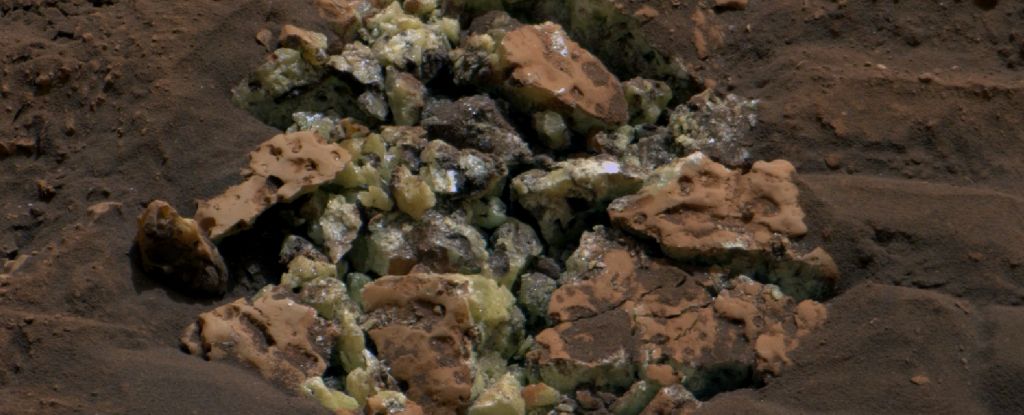Scientists report that the Curiosity rover, which is currently exploring the Gediz Vallis Channel, has found a sample of sulfur. It is regularly found on Mars in the form of sulfate compounds. However, in its pure form, the pure substance was discovered for the first time.

Curiosity’s new find
Scientists from NASA’s Jet Propulsion Laboratory report that the Curiosity rover has made an interesting geologic discovery on Mars. It was just going over a rather large rock in the channel of the Gediz Vallis Channel. When it cracked under its weight, a treasure trove of bright yellow was inside.
You’d think Curiosity would have found gold on the Red Planet, but it was actually pure sulfur. However, this substance is no less a treasure for scientists. After all, it has never been found in such a state on Mars before. It is one of the elements of the periodic table, but is most often found in compounds.
Such sulfur-containing sulfate compounds are widespread on Earth. The best known of them is gypsum stone. However, they have also been found on Mars many times before. They are evidence of times in its past when high volcanic activity was combined with the presence of liquid water.
Mysterious sulfur
The presence of sulfates is generally positive for the possibility of life on Mars in the present or past. These compounds are part of various organic substances. However, the existence of sulfur in pure form is actually even more important.
The thing is, there are a lot of gray rocks like this, which are yellow inside, around Curiosity right now. If it’s all pure sulfur, it must have formed at some point, and that’s only possible under a certain, very narrow range of conditions.
As scientists have believed until now, neither the Gediz Vallis Channel nor Mars has ever had one. But there may well be something we don’t know about it. Which means the sulfur found is an opportunity to discover it. Probably the exact area of Curiosity operating now was once not only flowing with water, but had many different conditions than today.
According to www.sciencealert.com


